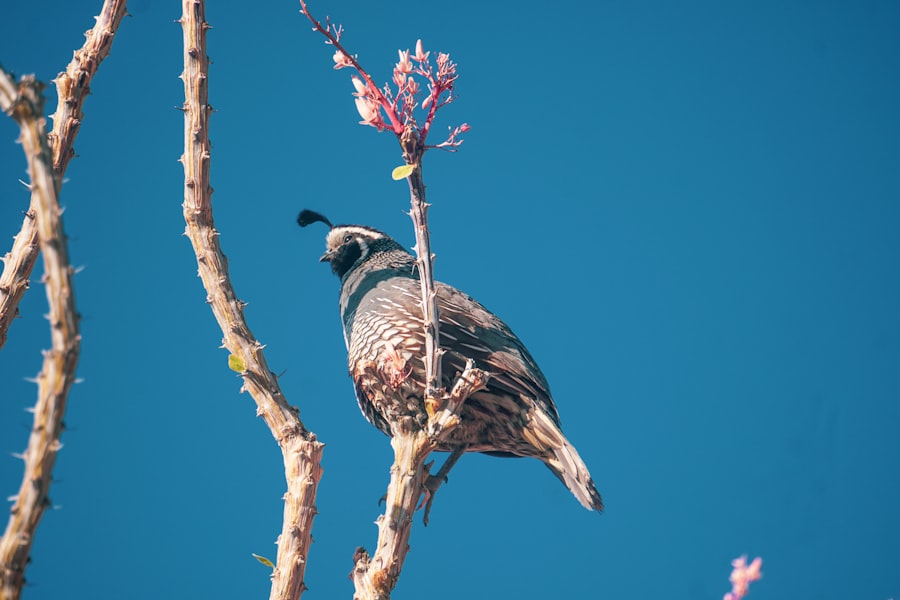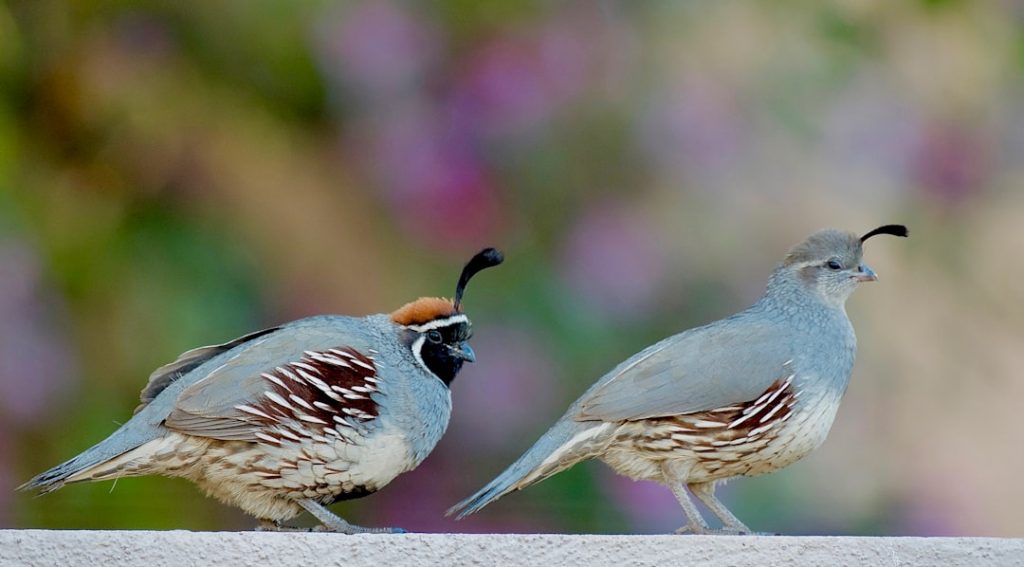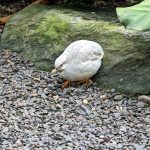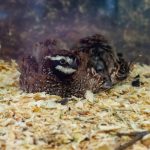Selecting the right quail breeding stock is crucial for a successful breeding program. When choosing breeding stock, it’s important to look for healthy, active birds with good conformation and strong genetics. Look for birds that are free from any visible signs of disease or deformities. It’s also important to consider the age of the birds, as older birds may have a decreased fertility rate. When selecting breeding stock, it’s also important to consider the breed standard and select birds that closely match the desired traits for that breed.
In addition to physical traits, it’s also important to consider the temperament of the birds. Look for birds that are calm and not overly aggressive, as this can lead to issues within the breeding environment. It’s also important to consider the genetic diversity of the breeding stock to prevent inbreeding and maintain a healthy gene pool. By carefully selecting the right quail breeding stock, you can set the foundation for a successful and sustainable breeding program.
When selecting quail breeding stock, it’s important to consider the specific goals of your breeding program. Whether you are breeding for meat production, egg production, or simply for ornamental purposes, it’s important to select birds that align with these goals. For example, if you are breeding for meat production, you may want to prioritize birds with a larger body size and fast growth rate. On the other hand, if you are breeding for egg production, you may want to prioritize birds that are known for their high egg-laying capacity. By selecting breeding stock that aligns with your specific goals, you can ensure that your breeding program is focused and efficient.
Table of Contents
- 1 Creating the Ideal Breeding Environment
- 2 Understanding Quail Breeding Behavior
- 3 Managing Quail Breeding Cycles
- 4 Caring for Quail Chicks
- 5 Preventing Common Breeding Issues
- 6 Selling and Marketing Elegant Quail
- 7 FAQs
- 7.1 What is elegant quail breeding?
- 7.2 What are the key considerations for elegant quail breeding?
- 7.3 What are the housing requirements for elegant quail breeding?
- 7.4 What do elegant quails eat and what are their nutritional requirements?
- 7.5 What are the breeding conditions for elegant quails?
- 7.6 What are the common health issues in elegant quail breeding?
- 7.7 What are the legal considerations for elegant quail breeding?
Key Takeaways
- Select breeding stock with good genetics and health to ensure strong and productive offspring
- Provide a breeding environment with proper lighting, temperature, and space to encourage mating and egg laying
- Understand quail breeding behavior, such as courtship displays and nesting habits, to support successful breeding
- Manage breeding cycles by monitoring egg production, incubation, and hatching to maximize productivity
- Care for quail chicks by providing warmth, proper nutrition, and protection from predators
- Prevent common breeding issues like egg binding and infertility through proper nutrition and regular health checks
- Market elegant quail by highlighting their unique features and qualities, and target customers interested in ornamental birds
Creating the Ideal Breeding Environment
Creating the ideal breeding environment is essential for the success of your quail breeding program. The breeding environment should be designed to provide the necessary conditions for breeding, nesting, and raising chicks. When setting up the breeding environment, it’s important to consider factors such as temperature, humidity, lighting, and ventilation. Quail thrive in a warm and dry environment, so it’s important to provide a consistent temperature and humidity level within the breeding area. Additionally, proper ventilation is crucial to prevent the buildup of ammonia and other harmful gases.
Nesting boxes should be provided to give the quail a safe and comfortable place to lay their eggs. The nesting boxes should be filled with clean bedding material such as straw or wood shavings to provide a suitable nesting environment. It’s also important to provide adequate lighting in the breeding environment to stimulate breeding behavior and egg production. Natural light or artificial lighting can be used to ensure that the quail receive the necessary light exposure.
In addition to providing the necessary physical environment, it’s also important to consider the social dynamics within the breeding environment. Quail are social birds and thrive in groups, so it’s important to provide enough space for the birds to move around and interact with each other. By creating an ideal breeding environment, you can ensure that your quail breeding program is set up for success.
Understanding Quail Breeding Behavior
Understanding quail breeding behavior is essential for successfully managing a quail breeding program. Quail are known for their complex social structures and mating behaviors, so it’s important to have a good understanding of their natural behaviors in order to effectively manage their breeding cycles. Quail are polygamous birds, meaning that one male will mate with multiple females within a group. This natural behavior should be taken into consideration when setting up breeding groups within the breeding environment.
During the breeding season, male quail will display courtship behaviors such as strutting, calling, and puffing up their feathers to attract females. It’s important to observe these behaviors in order to determine which males are actively mating with females within the group. Additionally, female quail will display receptive behaviors such as crouching and vocalizing when they are ready to mate. By understanding these behaviors, you can ensure that mating is occurring within the breeding groups.
It’s also important to understand the nesting behaviors of quail in order to provide suitable nesting conditions within the breeding environment. Female quail will seek out secluded areas to build their nests and lay their eggs. Providing suitable nesting boxes filled with clean bedding material will encourage nesting behavior and provide a safe place for the females to lay their eggs. By understanding quail breeding behavior, you can effectively manage their breeding cycles and ensure successful reproduction within your breeding program.
Managing Quail Breeding Cycles
Managing quail breeding cycles is essential for maintaining a productive and sustainable breeding program. Quail have specific breeding seasons based on environmental factors such as temperature and daylight hours. It’s important to be aware of these natural breeding cycles in order to effectively manage the timing of mating and egg production within your breeding program. By understanding the natural breeding cycles of quail, you can optimize your breeding program for maximum productivity.
In order to manage quail breeding cycles, it’s important to provide the necessary environmental conditions to stimulate breeding behavior and egg production. This includes providing adequate lighting to simulate longer daylight hours, as well as maintaining a consistent temperature and humidity level within the breeding environment. By creating the ideal environmental conditions, you can encourage the quail to enter into their natural breeding cycles.
It’s also important to monitor the reproductive activity of the quail within the breeding groups in order to determine when mating is occurring and when eggs are being laid. By keeping track of these reproductive behaviors, you can effectively manage the timing of egg collection and incubation within your breeding program. By managing quail breeding cycles, you can ensure that your breeding program is operating at its full potential and producing healthy offspring.
Caring for Quail Chicks
Caring for quail chicks is a crucial aspect of maintaining a successful quail breeding program. Once the eggs have hatched and the chicks have emerged, it’s important to provide them with the necessary care and attention in order to ensure their health and well-being. The first step in caring for quail chicks is to provide them with a suitable brooding environment. This includes providing a warm and draft-free area with access to food and water.
Quail chicks require a consistent temperature of around 95 degrees Fahrenheit during their first week of life, which can then be gradually reduced by 5 degrees each week until they are fully feathered. It’s important to monitor the temperature within the brooding area using a thermometer in order to ensure that it remains within the appropriate range for the chicks. Additionally, providing access to chick starter feed and clean water is essential for their growth and development.
In addition to providing a suitable brooding environment, it’s important to monitor the health of the quail chicks on a regular basis. Look for signs of illness or distress such as lethargy, huddling together, or abnormal droppings. If any issues arise, it’s important to take immediate action in order to prevent further complications. By providing proper care and attention to quail chicks, you can ensure that they grow into healthy and productive members of your quail flock.
Preventing Common Breeding Issues

Preventing common breeding issues is essential for maintaining a successful quail breeding program. One common issue that can arise in quail breeding programs is infertility or low fertility rates within the breeding stock. This can be caused by factors such as age, genetics, or environmental conditions. To prevent infertility issues, it’s important to regularly assess the fertility rates of your breeding stock and make adjustments as needed.
Another common issue in quail breeding programs is poor hatchability of eggs. This can be caused by factors such as improper egg handling, inadequate incubation conditions, or genetic factors. To prevent poor hatchability, it’s important to carefully handle and store eggs before incubation, as well as provide consistent temperature and humidity levels during incubation. Additionally, selecting breeding stock with strong genetics for hatchability can help prevent this issue.
Maintaining a healthy and balanced diet for your quail breeding stock is essential for preventing common health issues that can impact fertility and hatchability. Providing access to high-quality feed that meets their nutritional needs is crucial for maintaining their overall health and reproductive capabilities. Additionally, providing access to clean water at all times is essential for preventing dehydration and maintaining proper hydration levels within the breeding stock.
Selling and Marketing Elegant Quail
Selling and marketing elegant quail can be an exciting opportunity for breeders looking to share their passion with others. Whether you are selling live birds or hatching eggs, it’s important to have a clear marketing strategy in place in order to reach potential customers. One effective way to market elegant quail is through online platforms such as social media, online marketplaces, or dedicated websites. By showcasing your elegant quail through high-quality photos and detailed descriptions, you can attract potential buyers who are interested in adding these beautiful birds to their own flock.
In addition to online marketing, attending local poultry shows or agricultural fairs can be a great way to showcase your elegant quail and connect with potential buyers in person. These events provide an opportunity to network with other breeders and enthusiasts while showcasing the unique qualities of your elegant quail. Building relationships within the poultry community can lead to valuable connections and potential sales opportunities.
When selling elegant quail, it’s important to provide excellent customer service and support in order to build trust with your buyers. This includes providing accurate information about your birds or eggs, offering guidance on care and maintenance, and being responsive to any questions or concerns that may arise. By providing a positive buying experience, you can build a loyal customer base and establish a strong reputation within the poultry community.
In conclusion, selecting the right quail breeding stock is crucial for a successful breeding program. Creating the ideal breeding environment involves providing suitable conditions for mating, nesting, and raising chicks. Understanding quail breeding behavior is essential for managing their reproductive cycles effectively. Caring for quail chicks requires providing a suitable brooding environment and monitoring their health closely. Preventing common breeding issues involves addressing factors such as infertility, poor hatchability, and overall health of the breeding stock. Selling and marketing elegant quail involves developing a clear strategy for reaching potential buyers through online platforms or local events while providing excellent customer service and support.
In conclusion, selecting the right quail breeding stock is crucial for a successful breeding program. Creating the ideal breeding environment involves providing suitable conditions for mating, nesting, and raising chicks. Understanding quail breeding behavior is essential for managing their reproductive cycles effectively. Caring for quail chicks requires providing a suitable brooding environment and monitoring their health closely. Preventing common breeding issues involves addressing factors such as infertility, poor hatchability, and overall health of the breeding stock. Selling and marketing elegant quail involves developing a clear strategy for reaching potential buyers through online platforms or local events while providing excellent customer service and support. It is important to establish a strong reputation for producing healthy and high-quality quail to attract and retain customers.
If you’re interested in elegant quail breeding, you may also want to explore the topic of converting a shed into a chicken coop. This article on poultrywizard.com provides valuable insights and tips on how to repurpose a shed to create a comfortable and functional living space for your chickens. Just as with quail breeding, creating a suitable environment for your chickens is essential for their health and well-being.
FAQs
What is elegant quail breeding?
Elegant quail breeding refers to the process of raising and breeding elegant quails, also known as Chinese painted quails, for various purposes such as pets, ornamental birds, or for their eggs and meat.
What are the key considerations for elegant quail breeding?
Key considerations for elegant quail breeding include providing proper housing, nutrition, and care for the quails, as well as ensuring proper breeding conditions and managing the breeding process.
What are the housing requirements for elegant quail breeding?
Elegant quails require a suitable enclosure that provides adequate space, ventilation, and protection from predators. The enclosure should also have nesting areas and perches for the quails.
What do elegant quails eat and what are their nutritional requirements?
Elegant quails are omnivorous and require a diet that includes a combination of commercial quail feed, seeds, grains, and fresh greens. They also need access to clean water at all times.
What are the breeding conditions for elegant quails?
Elegant quails require a quiet and stress-free environment for breeding. They also need proper lighting, temperature, and humidity levels to encourage breeding behavior and egg production.
What are the common health issues in elegant quail breeding?
Common health issues in elegant quail breeding include respiratory infections, parasites, and injuries. It is important to monitor the quails for signs of illness and provide proper veterinary care when needed.
What are the legal considerations for elegant quail breeding?
Before engaging in elegant quail breeding, it is important to be aware of any local or national regulations regarding the breeding, sale, and ownership of quails. This may include obtaining permits or licenses.
Meet Walter, the feathered-friend fanatic of Florida! Nestled in the sunshine state, Walter struts through life with his feathered companions, clucking his way to happiness. With a coop that’s fancier than a five-star hotel, he’s the Don Juan of the chicken world. When he’s not teaching his hens to do the cha-cha, you’ll find him in a heated debate with his prized rooster, Sir Clucks-a-Lot. Walter’s poultry passion is no yolk; he’s the sunny-side-up guy you never knew you needed in your flock of friends!







